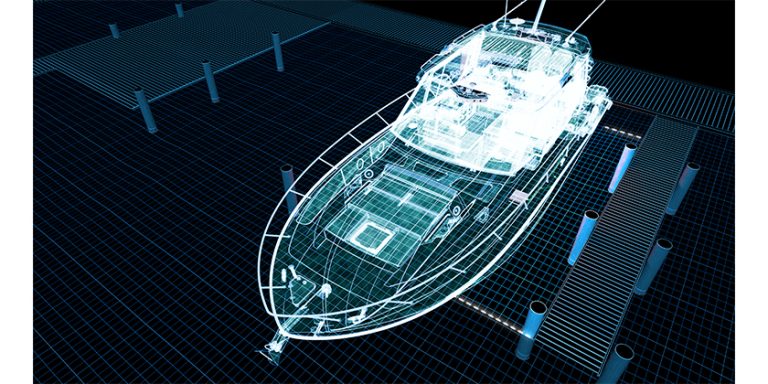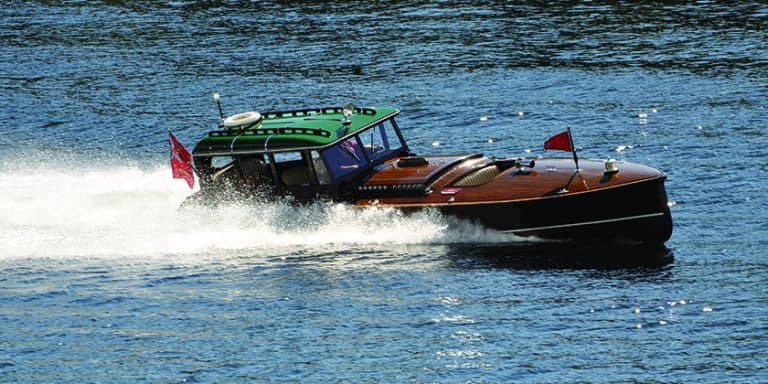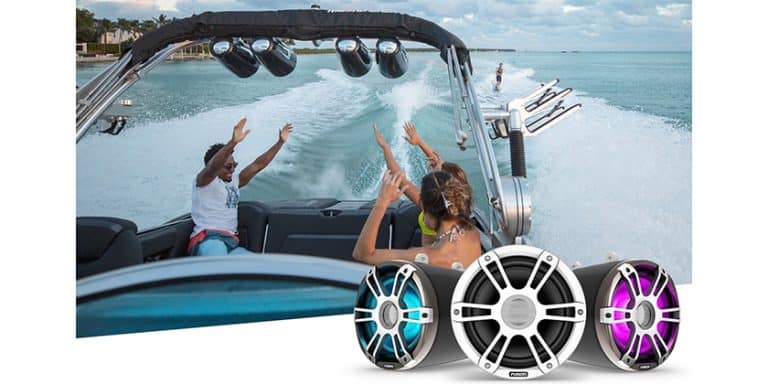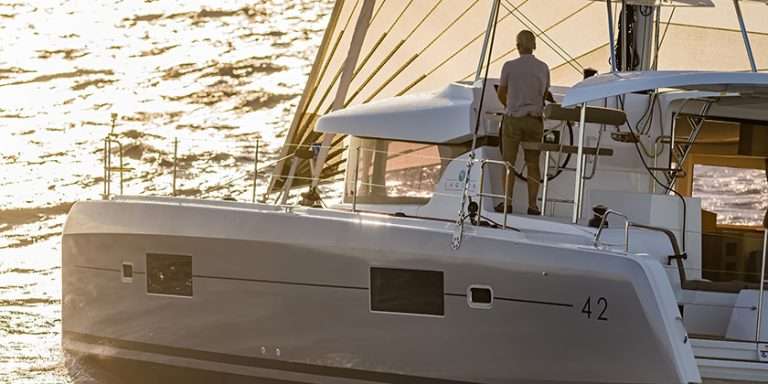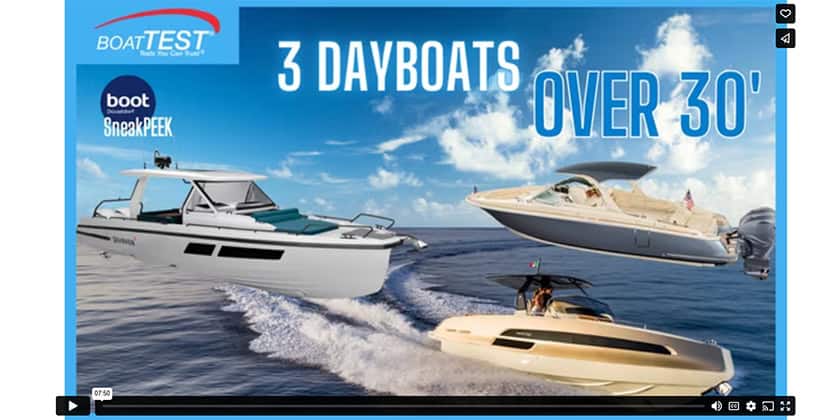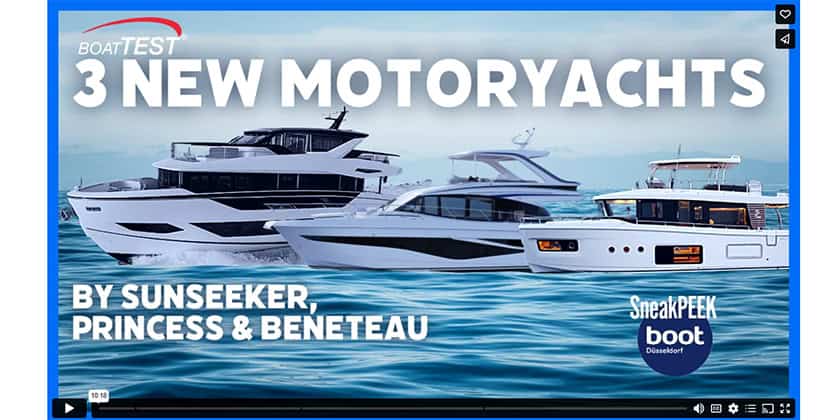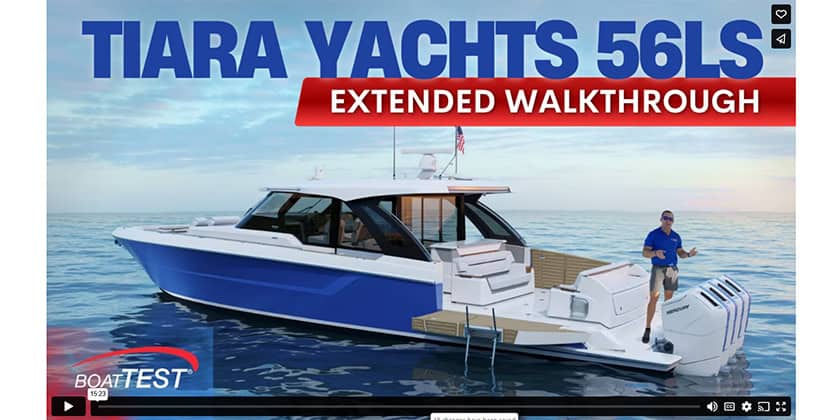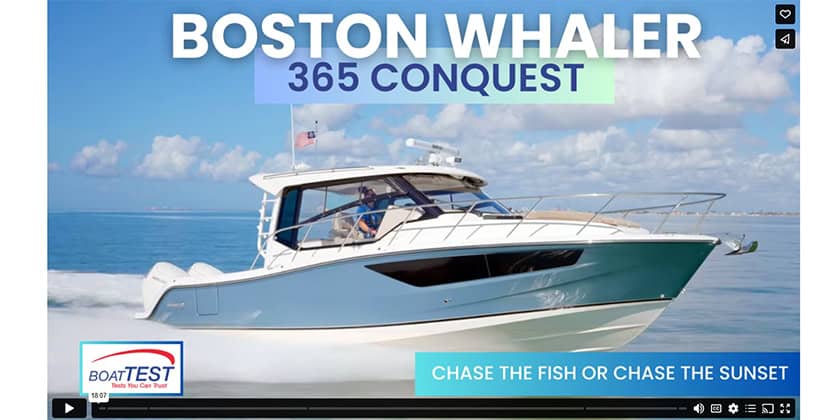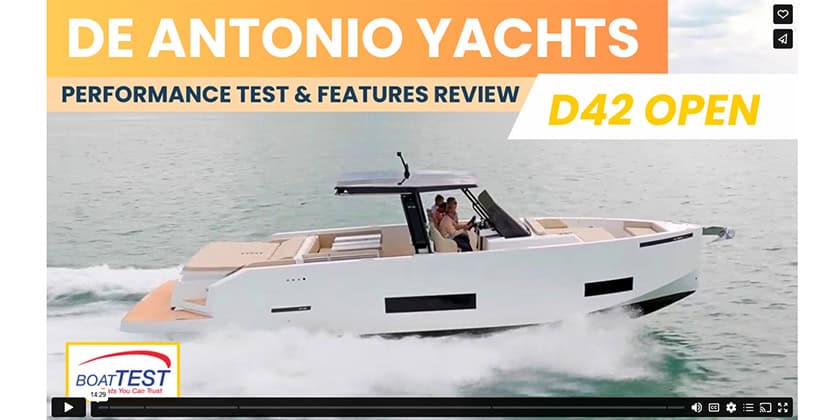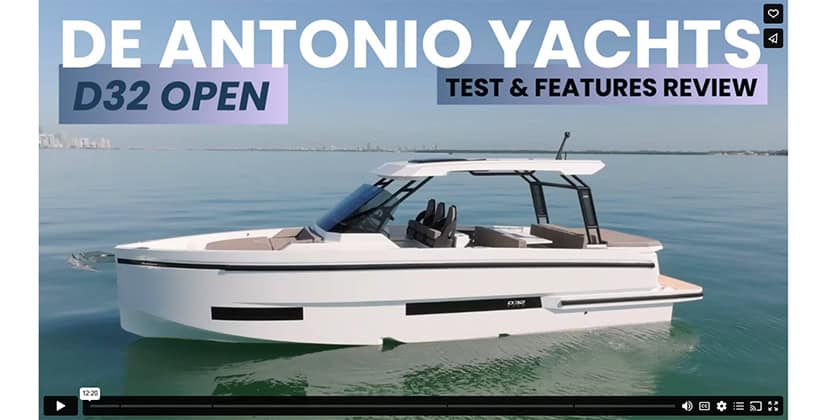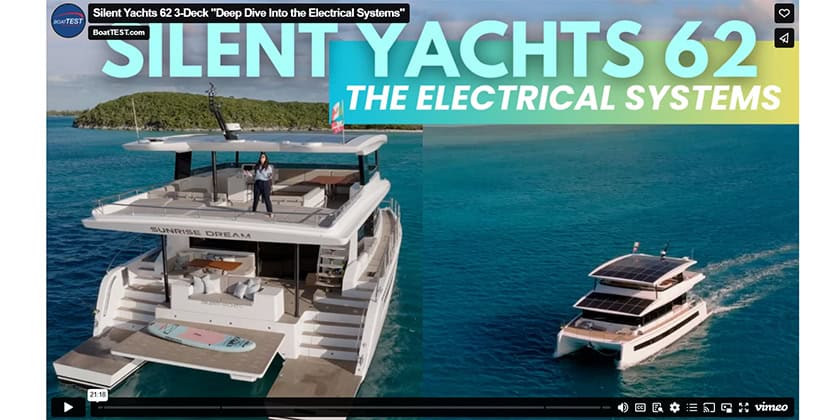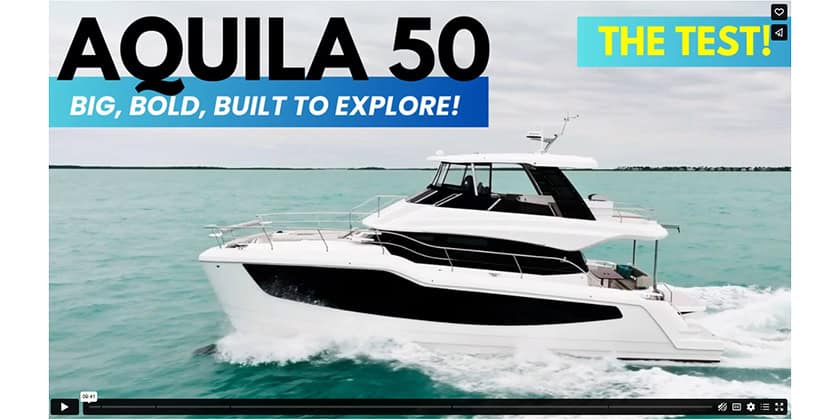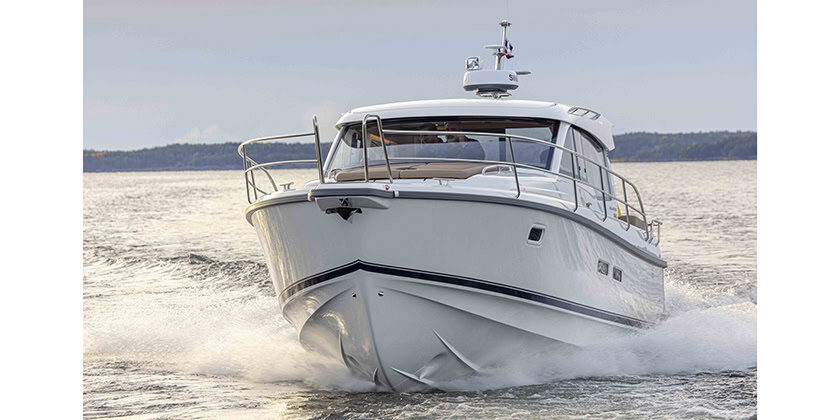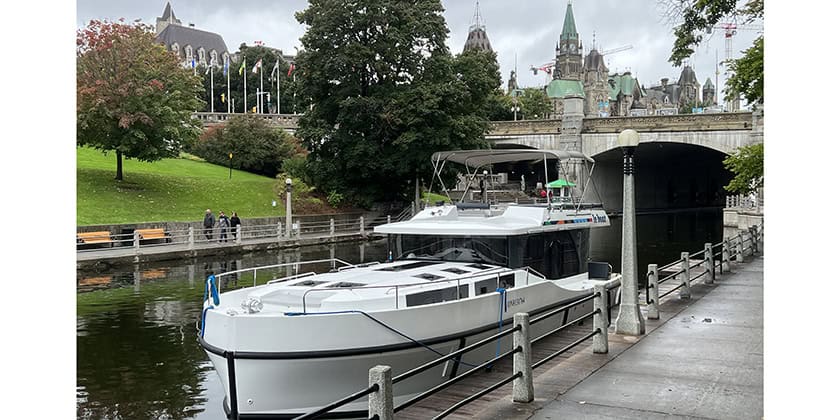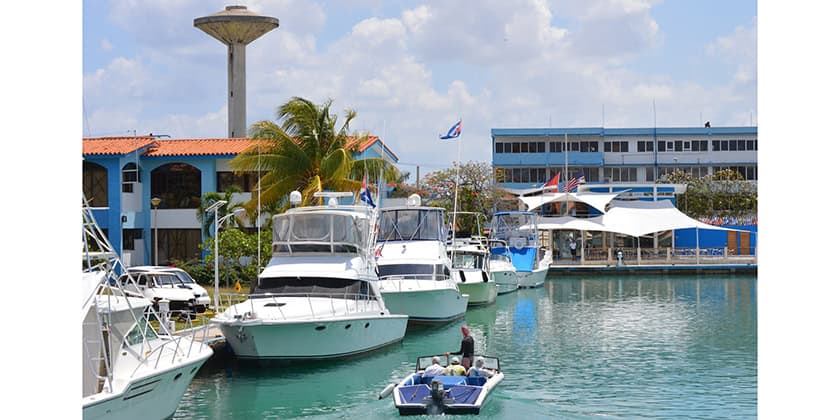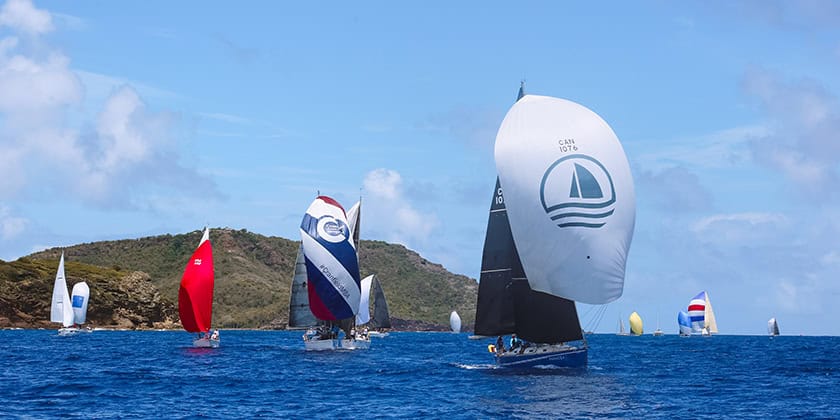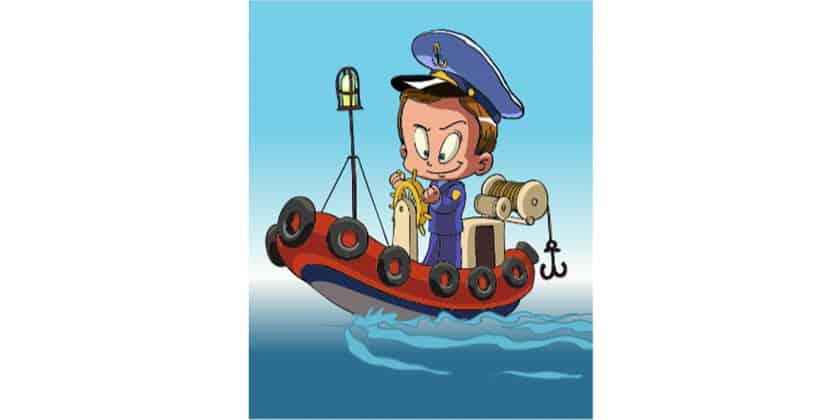Lithium Power
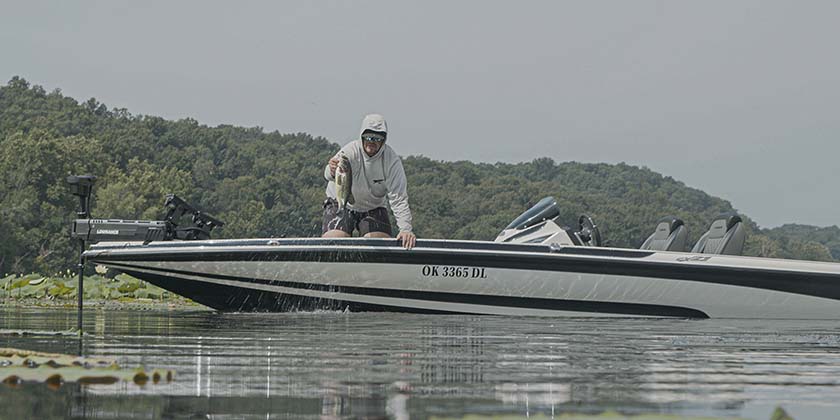
By Mike Gridley
Whether your time on the water is spent fishing, enjoying tow sports or cruising, the demands of modern electronics, high-power audio systems, and the amenities onboard your boat require a lot from your batteries. So, are yours up to the task?
While many boaters rely on the tried-and-true technology of lead acid flooded or absorbent glass mat (AGM) batteries due to their lower cost, availability, easy maintenance and installation, they do have their drawbacks. They are heavy, slow to charge, lose power quickly when discharging and have a shorter lifespan, which is accelerated depending on their application and unintentional abuse. Batteries used for house banks, inverter banks, and trolling motors that are frequently cycled (charged and discharged) and/or deeply discharged lower than 50 per cent deliver only 300-500 charge/discharge cycles. With continuous use, they may only last a year or two. So, when they require replacement, or when new system installations demand additional battery capacity, it’s decision time.
“The ideal time to upgrade to Lithium-Ion power is when you are faced with replacing aging and poor-performing lead acid or AGM batteries,” says Brian Kelly, of Bayland Marine Systems, a marine electronics dealer in Penetanguishene, Ontario. “While initially more expensive for the batteries and required system upgrades, the longevity of the batteries, measured in thousands of cycles, pays off over time.”
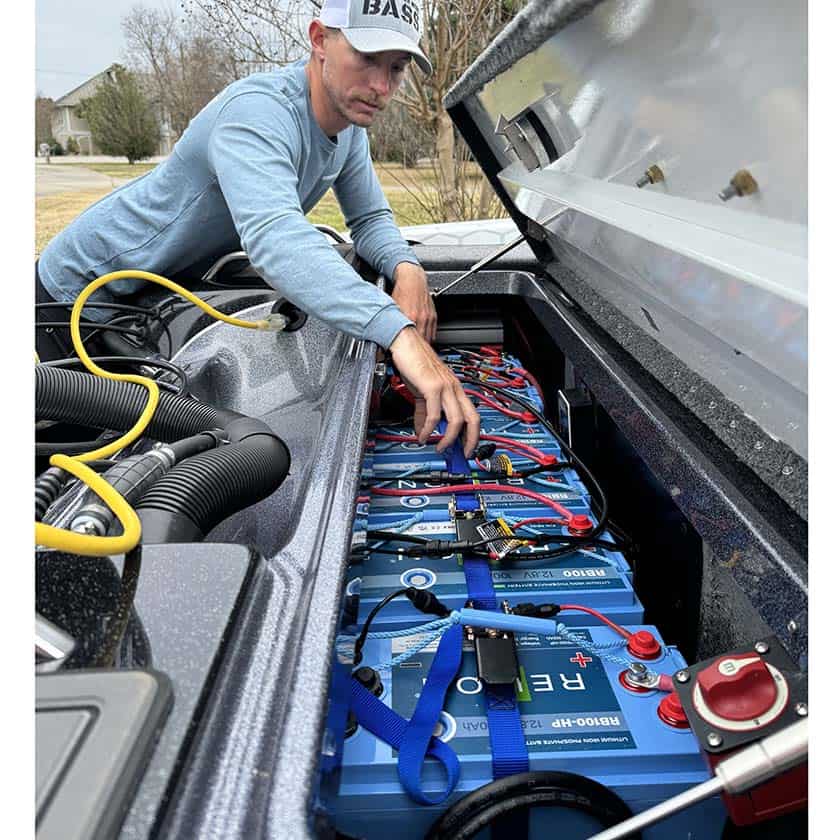
Lithium-ion—the Other Option
Lithium batteries, the new technology for your boat. Not really… lithium battery technology has been with us since 1991, when Sony launched the first rechargeable Lithium-ion batteries for small portable applications. Lithium-ion batteries began penetrating the consumer marine market 20 years ago and have been steadily benefiting from ongoing research that has reduced their size and weight and improved storage capacity, efficiency and safety.
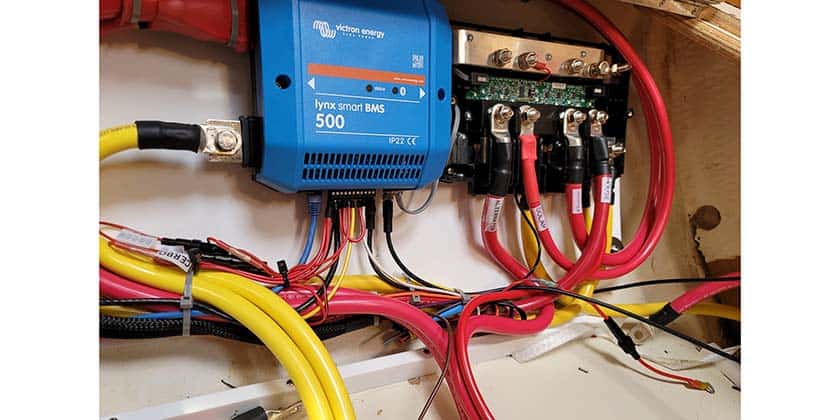
Pros and Cons of Lithium-ion Batteries
Let’s address the safety concerns first, because every boater seems to have an opinion when a discussion breaks out, and not necessarily based on facts or knowledge. Rumours abound that Lithium-ion batteries are not safe and are prone to fires that are difficult to extinguish. Stories of electric car fires, E-bikes bursting into flames and other battery failures are sensationalized by the media, potentially dampening enthusiasm for the technology’s place on boats.
Lithium batteries are manufactured with a wide range of chemistries. One of the newest and safest range of Lithium-ion batteries are Lithium-Ion Phosphate, LiFePO4 batteries. These batteries have gone through extensive testing that confirms they are as safe as a traditional lead acid battery.
The toughest testing, critically important to boaters, was undertaken by the American Boat and Yacht Council (ABYC), who now list LiFePO4 batteries as the safest Lithium-ion batteries and the only ones approved for marine applications. All batteries and related equipment must meet the new ABYC E-13 standard. Transport Canada recognizes these standards.
On the technical and performance side, LiFePO4 batteries are lighter and smaller than a lead acid battery with the same capacity, reducing space requirements and allowing for addition batteries in the bank. They also have a much larger usable capacity, since they can be discharged down to 10 per cent, essential doubling the usable capacity of lead acid. Due to their high efficiency (99-100 per cent) and low internal resistance they charge much more rapidly. Depending on the battery specifications and charging profile, this can be as little as one to two hours. It should be noted that they should never be overcharged. They perform best when the charge level is between 40-50 per cent. A key benefit mentioned previously is their long life. LiFePO4 batteries can be charged and discharged up to ten times more (4,000-5,000 cycles) versus lead acid.
On the negative side, they are more expensive, however the cost has been coming down over time. Also, the installation will likely require additional upgrades to your charging sources, including alternators, chargers and inverters. We’ll explore this further along.
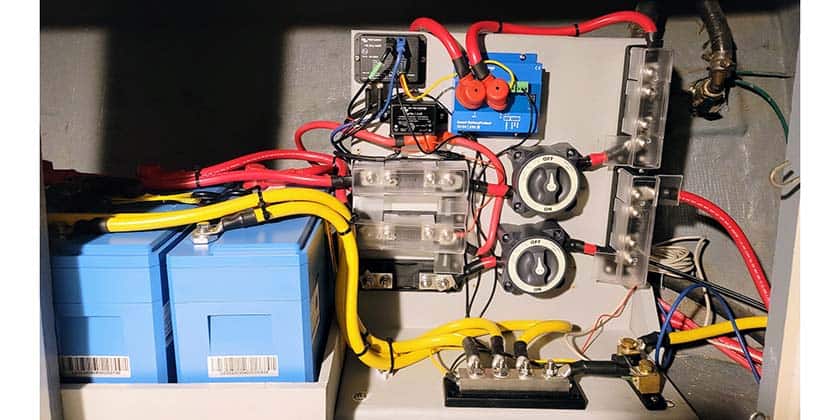
LiFePO4 Battery Types
LiFePO4 batteries are available in two types. The first type is with a built-in Battery Management System (BMS). The second type comes without a built-in BMS and requires an external BMS. BMS is an electronic battery management system that ensures the battery performs to its design specifications for best performance and longevity while always remaining safe.
Batteries with a built-in or internal BMS, often referred to as “Drop-in Batteries”, are ideal for basic applications and set ups, making them extremely popular in personal fishing boats and other small craft. Although generally installed as stand-alone batteries, they can also be installed in a battery bank.
The main advantage of these batteries is that they don’t require external charging controls. Another key advantage is that when properly installed in a bank, if one battery fails, the bank will still deliver power.
The major disadvantage of Drop-in batteries is that some of them lack connectivity for external monitoring and warnings and only provide basic protection for over and under voltage, overloads and overheating. Another drawback is the higher replacement cost due to the internal BMS.
For most installations, Lithium-ion batteries that require an external BMS are the best choice. The top rated external BMS units provide extensive safeguards and functionality. This should include reverse polarity protection, dead short protection, and the ability to monitor and balance the voltage level in individual battery cells. They must also prevent the battery cells from over or under charging, overheating or charging at below freezing temperatures, and communicate with all the charging systems to ensure optimum charging performance. The BMS must also monitor these potential issues and the overall battery conditions and providing warnings and data to a monitoring display onboard or via Bluetooth to a smart device.
If you are upgrading, some reputable brands available in Canada are Victron Energy, Renogy, Volthium, Mastervolt, Lithionics, Li Time, Battle Born, ReLion and Epoch.
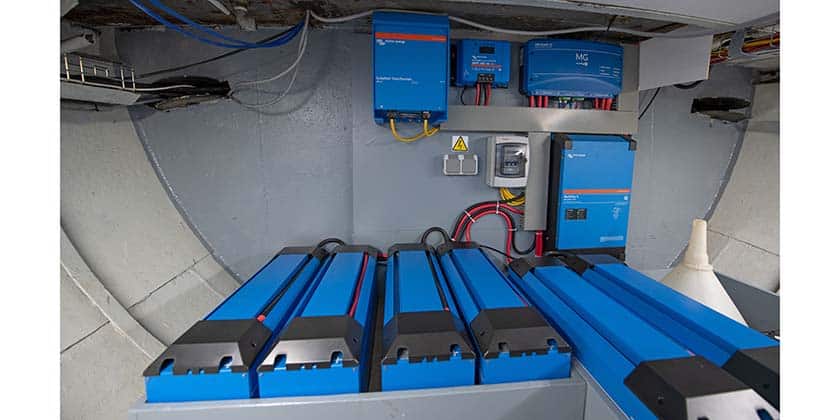
Installation
When considering upgrading your vessel to Lithium-ion batteries, it’s best to approach the upgrade with eyes wide open. This is usually not a straight replacement. It’s a project that requires a detailed understanding of Lithium-ion LiFePO4 battery requirements and limitations. This is a project best left to the professionals to design and install a system that performs efficiently with safety as the number one parameter. In most instances, insurance companies will not cover a vessel with Lithium-ion batteries unless the work has been done by professional.
The most basic conversion using a Drop-in battery in your fishing boat still has significant technical requirements. The first to be addressed is overcharging. Unlike lead acid batteries, over charging can cause catastrophic failure. It is critical that the engine alternator and battery charger are rated for Lithium-ion. Without the correct smart alternator, an external regulator designed for use with Lithium-ion must be installed. Top rated regulators are available from Wakespeed and Balmar.
For large battery banks, external BMS batteries are recommended. The first critical task is planning. A comprehensive audit of the vessels power requirements is essential to determine the bank configuration and the required number of batteries. Based on draw and battery specifications, multiple batteries may need to be connected in parallel to deliver the required amperage.
Installation will likely require system upgrades and additions. This may include high voltage alternators, a BMS, AC to DC and DC to DC chargers, inverter chargers, regulators, upgraded battery cables and wiring, battery switches and mandatory Class T fuses. To guarantee equal charging and discharging of all batteries, all cables must be of the same gauge and length. Employing a bus bar system ensures continued power delivery should a battery fail.
Consideration must also be given to the location of the batteries. While the batteries are waterproof, external BMS units are not and will require protection. The batteries should be securely mounted to prevent vibration in a well-vented location that is not exposed to extreme heat or freezing temperatures.
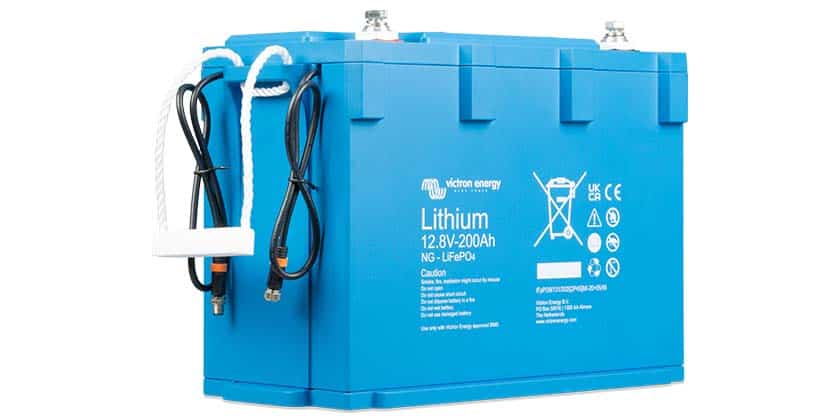
Charging
Every charging source must be rated for Lithium-ion, with programmable charging parameters that match the battery’s specifications. Of particular importance is the battery’s C rating. This indicates how fast a battery can be charged and discharged in an hour. A rating of 1C means this takes one hour, while 2C means it takes only thirty minutes (2-cycles per hour).
Lithium-ion batteries, with their low internal resistance, have a rapid discharge rate and can create a very high amperage spike if there is ever a short-circuit. To ensure your fuses do not fail due to plasma arcing, always select fuses that have the appropriate interrupting current (AIC) rating. These class T fuses must meet the ABYC T13 20,000 AIC standard.
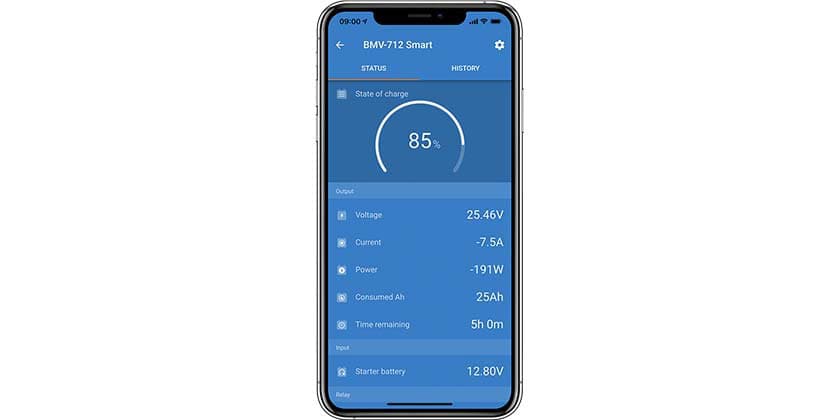
Managing and Monitoring
Monitoring is the final essential component of a reliable and efficient Lithium-ion system, and this must be considered during installation. In the past, with lead acid or AGM battery banks, monitoring was typically for voltage only, just a gauge indicating high and low voltage. Today’s monitors report on multiple parameters including voltage, individual battery cell temperatures, power consumption and input from various charging systems, in some cases providing both real time and historical data. All this can be displayed and managed from a range of built-in panels or fed to a compatible Multi-Function Display via networks or by Wi-Fi. Bluetooth solutions to monitor and manage your batteries and systems are available for your smart devices.
Next Steps
While the topic is still hotly debated, Lithium-ion batteries are steadily expanding into the market. Both traditional batteries and Lithium-ion LiFePO4 batteries have their supporters, but the acceptance of Lithium-ion LiFePO4 batteries continues to grow, while prices continue to drop and the technology continues to improve. In my opinion, the smart decision is to consider Lithium-ion the next time your batteries need replacing. While upgrading your vessel to a Lithium-ion battery system may seem complicated at first, it offers a longer lasting, more efficient power solution.

